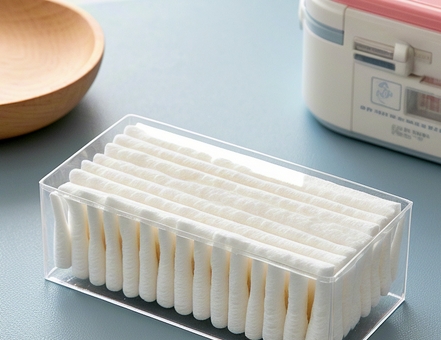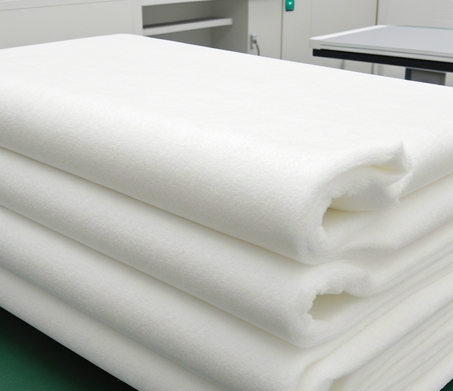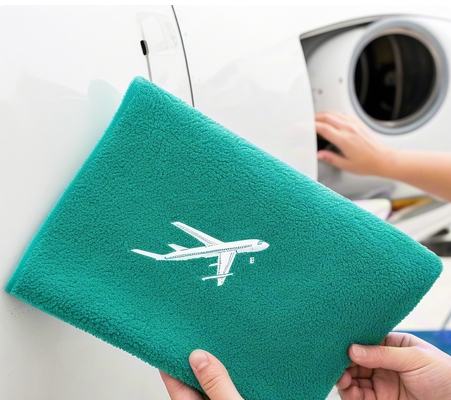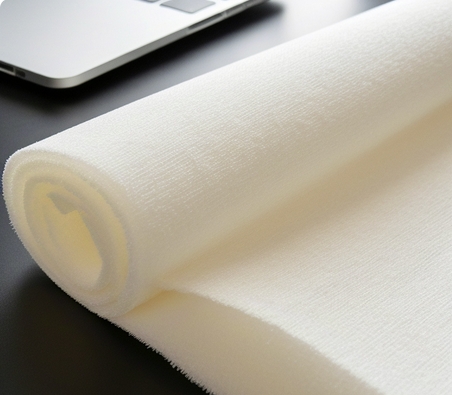Language

Analysis of core technology of dust-free pre-wet wipes and cross-domain application practice
In the high-end manufacturing field, dust-free pre-wet wipes have become the standard solution for precision cleaning with their innovative technology systems. This product has been fully automated in the ISO Class 5 clean room environment, and uses vacuum sealed aluminum foil packaging technology to achieve particle control indicators better than ISO 14644-1 Class 3 standard. Its core formula is based on the precise ratio of 70% isopropanol (IPA) and ultrapure water. The combination is verified by the ASTM E2315 standard to have the characteristics of rapid volatilization and surface tension balance. It can be compared to "liquid precision tweezers", which can not only effectively capture microcontaminants without leaving any traces.
Analysis of core technological innovation points 1. Particle control system: The particle release amount of each wet wipe is controlled below 0.3μm in diameter, which is equivalent to 1/200 of the diameter of human hair. Using patented three-dimensional edge locking technology, SEM electron microscopy detection confirmed that the fiber shedding volume is 83% lower than that of traditional dust-free cloth.
2. Chemical stability design: The pH buffering system is maintained in the range of 6.8±0.2, like a precision chemical balance, which can not only avoid metal corrosion but also ensure cleaning performance. The chloride ion concentration is strictly controlled at<1ppm, meeting the NAS 1638 standard for aviation hydraulic systems.
3. Packaging protection revolution: Independent aluminum foil packaging systems can be regarded as "micro clean rooms", passing ISO 8573-1 certified inert gas filling technology to ensure that the wipes maintain initial activity during storage cycle.
Performance verification of key industries in microelectronics manufacturing field: TSMC's 2022 technical white paper disclosed that after the application of dust-free pre-wet wipes in the 7nm process wafer cleaning process, the particle contamination rate of key processes dropped from 0.12% to 0.05%. The electrostatic protective barrier formed by its surface resistance value (10^8Ω·cm) successfully reduced ESD damage accidents by 67%.
Biomedical Application: In the maintenance procedures of Da Vinci surgical robots, Johnson & Johnson Medical uses FDA 510(k) certified medical-grade pre-wet wipes, the device maintenance time is reduced by 40%. Microbial challenge tests show that its killing efficiency on the black mutation of Bacillus subtilis reached a log6 reduction value.
Aviation maintenance practice: Airbus A350XWB composite surface treatment data shows that the incidence of stress corrosion in aluminum alloy components decreased by 52% after using pre-wet wipes. Its cleaning performance was verified by 8000 hours of equivalent acceleration experiments during the maintenance of Boeing 787 hydraulic system, and the key parameters comply with the NAS 1638 Class 5 standard.
the quality verification system products pass triple quality verification: the raw materials are analyzed by ICP-MS mass spectrometry to ensure that the metal ions meet the standards; the process environment is subject to ISO 14644 dynamic monitoring; the finished product sampling is carried out to perform ASTM F3121 wipe performance test. This three-dimensional quality control system is like a "digital quality passport" configured for each production batch, ensuring stable output from nano-level cleaning to macroeconomic performance.
Technical specifications for the entire operation of professional dust-free pre-wet cloth
Clean environment control standard operators must wear Type 5 anti-static one-piece suits and complete the ionic air bath dust removal procedure in the ISO Class 5 (corresponding to the US federal standard Class 100). It is recommended to use a dual-stage air lock transition system to control the ambient particle concentration to ≤3,520 particles/cubic meter (≥0.5μm). It is particularly important to note that the dust-free pre-wet wipesafter opening should be sealed within 15 seconds. This time threshold is based on the humidity maintenance experimental data under the ASTM D4332 standard.
Material adaptability guidelines For sensitive substrates such as polycarbonate, ASTM F1249 moisture permeability test and ISO 8295 friction coefficient test must be performed. Taking a certain brand of optical coating cleaning case as an example, dust-free wet cloth with a 65g/m² non-woven fabric substrate is selected, and combined with the encrypted edge locking process with a diameter of 0.8mm, the incidence of wiping scratches can be reduced from 9.3% of the conventional model to 5.6% (data source: SPIE Optical Engineering Journal 2023 Annual Report). Medical-grade applications require additional EN 13795 bioload detection to ensure a microbial contamination index<1 CFU/cm².
The structured wiping operation system is recommended to adopt a three-stage cleaning method: firstly, linear wipe (pressure 0.3kg/cm²) is performed at a 30° inclination angle to remove coarse surface particles; then perform a circular motion of 5cm in diameter (pressure 0.5kg/cm²) to dissolve organic stains; finally use a Z-type overlapping path (speed 8-12cm/s) to complete the final cleaning. In semiconductor wafer cleaning scenarios, 12kV electrostatic elimination and >93% 0.1μm particle clearance can be achieved simultaneously with dust-free pre-wet wipes using ionic air knife device.
Quality control and waste management Each batch of dust-free pre-wet wipes must be inspected through a 10x magnifying glass, focusing on checking whether the deviation of the weft density at the joints is
Preventive maintenance procedures The key clean areas should be established for 4-hour cycle cleaning mechanisms, and this periodic parameter refers to the particle deposition curve data provided by the ASML lithography machine manufacturer. It is recommended to perform wipe pressure calibration monthly and use a digital pressure gauge to control the pressure error within the range of ±0.05kg/cm². For high-value optical components, a digital twin model of wipe paths can be established to reduce the risk of micro scratches by 99.9% through ANSYS simulation optimization.
Technical specifications and safety application guidelines for industrial fabric regeneration treatment
In the precision cleaning process of the electronic manufacturing industry, the professional-grade purification and cleaning line adopts a three-stage reverse osmosis water treatment process. This process includes three stages: initial washing and decontamination, ion replacement and terminal bleaching. After testing, the cleanliness of the fabric can reach ISO level 4 standard.
It should be noted that after 15 standard cleaning cycles, the surface friction coefficient of the polyester fiber substrate will increase from the initial value of 0.18 to 0.25. It is recommended to force scrap and replace it.
The operating specifications in the field of medical sterilization clearly require that special fabrics contaminated with biological samples must undergo an autoclave steam sterilization procedure. Experimental data show that sterilization in a constant temperature environment of 121℃ for 30 minutes can effectively kill six high-risk microorganisms, including Bacillus. In contrast, a normal washing regimen can only remove about 67% of pathogen residues.
Key points for chemical compatibility risk control: 1. In a strong acid and alkali environment (PH < 2 or > 12), its micron-scale fiber structure will degrade at a rate of 3.2μm/hour. 2. After contacting hydrofluoric acid (concentration ≥5%) for 30 minutes, the tensile strength of the fabric will drop by 58%. 3. Sodium hydroxide solution (concentration ≥30%) will cause irreversible crystallization on the fiber surface.
Special warnings for lithium battery manufacturing process: lithium hexafluorophosphate in the electrolyte components is permeable and corrosive to conventional fabrics. Industry cases show that special fabrics treated with fluorination can reduce the adsorption of electrolyte by 82%. Production data of a leading battery manufacturer confirmed that after using fluorinated fabrics, the failure rate of the pole sheet dropped from 0.37‰ to 0.09‰.
Comparative study of economic benefits: Analysis of clean room operation costs shows that pre-wet cloth systems can reduce the following three types of expenditures: - pure water consumption decreases by 41% (compared with traditional wipe technology) - waste treatment cost savings by 23% - manual wipe efficiency increases by 35%
Verified by third-party organizations, the standardized use of professional cleaning fabrics can increase the pass rate of electronic component surface particulate pollutants control to 99.3%, while reducing the frequency of equipment maintenance.
Tags:
RELATED RESOURCES

How to Choose Compliant Swabs?TOC Testing + Sterilization Standards to Improve Clean Sampling Pass R
In the field of pharmaceutical and biotechnology, the cleanliness control of equipment and production environm......
More

Class 100 dustless cloth technical specifications: ISO standards and ultrasonic edge sealing process
Technical specifications and in-depth interpretation of manufacturing process of a hundred-level dust-free clo......
More

How Aircraft Wipes Achieve Zero-Contamination Aircraft Engine Cleaning
Wipe star aviation-grade cleaning consumables are manufactured using innovative hydros pinning process, and th......
More

7 Questions on Selecting Ultrafine Dust-Free Wipes: Comparative Analysis of Ultrafine Fiber Cleaning
Comparative analysis of ultra-fine dust-free cloth and ultra-fine dust-free cloth: professional selection guid......
More
Related Products
Room 101, Building 1, Angeer Factory, No.4, Hetian Road, Shatian Community, Kengzi Street, Pingshan District, Shenzhen, Guangdong, P.R. China 518122
info@wipestar.com
+86-755-89616775
+86-755-89616773
Related Products
RELATED RESOURCES

How to Choose Compliant Swabs?TOC Testing + Sterilization Standards to Improve Clean Sampling Pass R
In the field of pharmaceutical and biotechnology, the cleanliness control of equipment and production environm.........
More

Class 100 dustless cloth technical specifications: ISO standards and ultrasonic edge sealing process
Technical specifications and in-depth interpretation of manufacturing process of a hundred-level dust-free clo.........
More
WIPESTAR
微信官方公众号